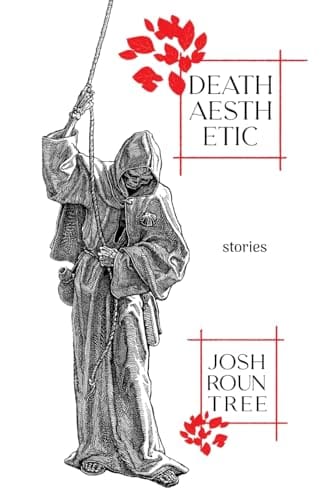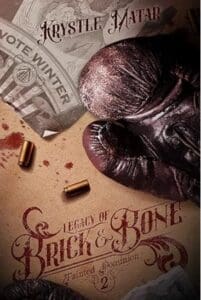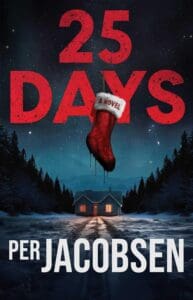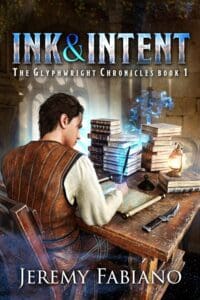
Synopsis:
“This whole collection is obsessed with death.”
Josh Rountree makes no bones about the mood in Death Aesthetic, his third collection of short fiction. Rountree explores the boundaries set by grief and guilt. He cracks open all manner of skeletons to peer inside the chest cavity, wondering what remains after everything else has left. He sniffs the night air, leaps and transforms into something both more human and not human at all. He knows all the words to the songs that bring us back from the edge.
We are never ready for that final transition. Rountree offers no assurances with Death Aesthetic, no promises about what lies beyond that black veil. But, as a compassionate psychopomp, he will be at your side for this journey.
Review:
I’ve learned to be careful about accepting anthologies and story collections for review because my method of reading them is just not particularly conducive to that activity. When I hit a story I’m just not vibing with, my impulse is to simply skip it. I’m also prone to putting them down halfway through and picking them up again six months later. This is perfectly fine, unless someone is expecting a cogent response to the book as a whole in a somewhat timely manner.
So, it’s a sign of something magic when I read a short story collection from front to back in a matter of days, something I’ve recently done with only Mariana Enriquez’ A Sunny Place for Shady People and, more recently, with Josh Rountree’s Death Aesthetic, two books that show us masters of the form, doing what they do best.
Death Aesthetic might have been simply grim, a collection of stories centered around death and grief, and some of the stories are certainly that. There’s an elegiac tone that predominates, sure, but there’s also a kind of palpable joy, a kind of overcoming, that seeps up through these stories, and that joy comes in the very act of creation itself, in the transformation of grief into story, into art. This is a theme made explicit in several stories (most notably “Till the Greenteeth Drag us Down”), but it’s also a kind of alchemy played out for us, line by line.
There are a lot of children in these stories, and people well into their middle years looking backward, but there is very little “nostalgia” and certainly none of the golden age revisionism one might find in Bradbury or King. No, in these stories, childhood is the locus for the first horrors and the first griefs. It’s a place of near helplessness, where everything from home to religion (there are multiple folk religions built in these pages) seem designed to frighten and stifle.
One standout story, “The Cure For Boyhood” creates just such a claustrophobic scene. When our protagonist learns to transform into a coyote, running all night in his closest approximation of freedom, his parents response is to “cure” him, in a move that could easily be read as an allegory for any number of ways that parents stifle and manipulate their children into what they want them to be. It’s short and devastating.
Along the way, we get Bigfoot stories, mermaids, suicidal folk religions, rock star visitations, and phantom women, all delivered in a style that I can only call magic realism. The world is hopelessly and delightfully skewed in these stories, and they’re all skewed in their own unique ways.
The closing story, “Till the Greenteeth Draw Us Down,” posits an not too distant future of climate collapse, with Galveston, Texas now permanently underwater, and a band of eccentric old folks and orphaned children banded together. We’ve read this story, in one form or another, but it’s not simply the inclusion of the Greenteeth –siren-like beings who resemble the dead and call to the living from the waters–that separates this tale. The whole world is so delightfully skewed, the line between reality and fantasy so blurred, that it takes on a fairytale feel that reminds me of Peter S. Beagle’s masterpiece, The Last Unicorn, itself a simultaneous elegy and celbration.
Death Aesthetic is jam packed with weird, seemingly effortless ideas, all executed with precision and heart, but its really the language that sets this collection apart. Line by line, these stories are simply and perfectly crafted.
I’ve rarely had so much fun feeling such absolute grief.








Leave a Reply